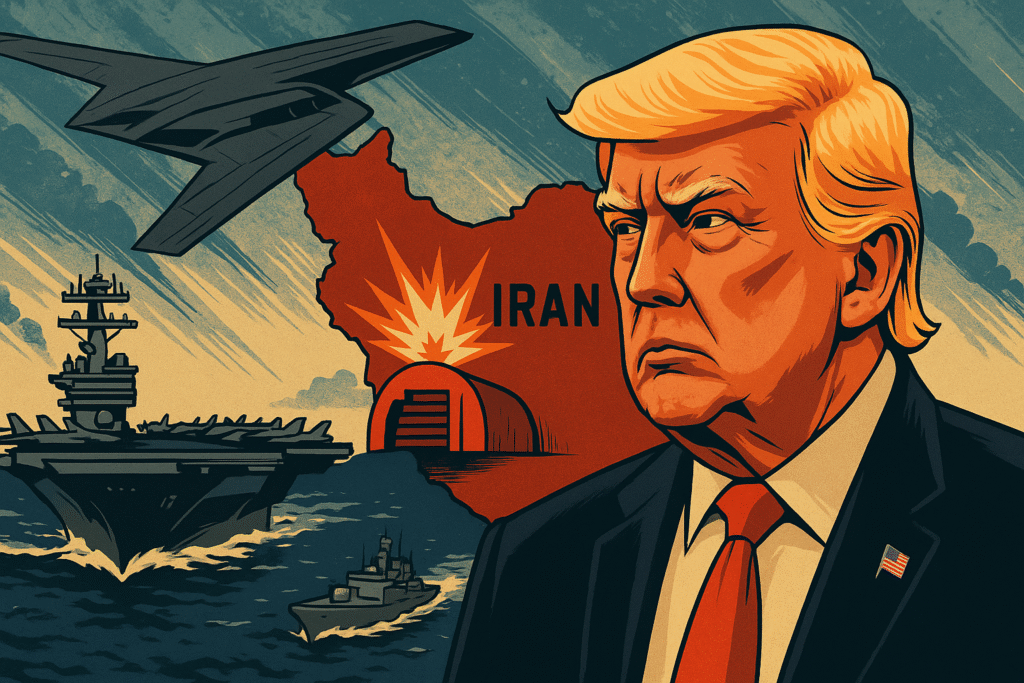Washington, D.C. — The United States is moving rapidly toward potential military action against Iran, with President Donald Trump signaling he could authorize strikes within days. The escalation follows intensified Israeli bombardment of Iranian territory and growing concern over Iran’s underground nuclear enrichment facilities.
The clearest indication came Monday, when the USS Nimitz, a nuclear-powered aircraft carrier, abruptly changed course from the South China Sea and began heading toward the Middle East. The carrier strike group, which includes the Nimitz and three guided-missile destroyers, will join another U.S. strike group and multiple destroyers already in the region, according to a U.S. defense official.
The redeployment is widely interpreted as a precursor to possible U.S. involvement in Israel’s campaign against Iran. At the top of the list of potential targets: Fordow, Iran’s fortified uranium enrichment site near the city of Qom, buried deep inside a mountain and protected by layers of reinforced concrete.
While Israel has inflicted damage on Iranian infrastructure in recent days, it lacks the weaponry to penetrate Fordow. The U.S., however, possesses GBU-57 “bunker-buster” bombs — 30,000-pound munitions designed to destroy hardened underground targets — and stealth B-2 bombers capable of delivering them. These aircraft would likely fly from the Diego Garcia base in the Indian Ocean, approximately 5,200 km from the target.
Military Logistics and Readiness
According to retired Gen. Joseph Votel, former head of U.S. Central Command (CENTCOM), such an operation would require careful logistical planning and absolute control over key variables, including Iranian air defenses and electronic warfare systems.
“You don’t just drop a bomb like this casually,” Votel told the Financial Times. “You need to ensure complete operational readiness.”
Votel estimated that four to five B-2 bombers could be deployed to Diego Garcia. While a single bomb might be sufficient to strike Fordow, analysts such as Mark Cancian of the Center for Strategic and International Studies (CSIS) suggest the U.S. would likely use multiple bombs to guarantee success.
Any bombing run would be supported by escort aircraft, GPS- or laser-guided weapons, and mid-air refueling tankers to extend operational reach. The Pentagon has already redirected dozens of such aircraft to Europe from U.S. bases in anticipation.
Ground Support and Force Protection
If a strike is authorized, the U.S. is expected to position search and rescue teams, deploy special forces, and ensure battle-ready intelligence capabilities, including space-based surveillance systems.
Missile defense expert Tom Karako of CSIS said the U.S. would need to ensure its bases in the region — including those in Iraq, Kuwait, Qatar, and Bahrain — are fully equipped to defend against potential Iranian retaliation.
“If Iran fires back, our systems need to be locked in and ready to intercept. Every second counts,” Karako said.
He added that the U.S. would likely rely on existing air defense assets such as HIMARS and Patriot missile systems, as it would take too long to move additional equipment into the theater.
Political Stakes and Timing
President Trump has hinted that a major decision could come soon, stating on Wednesday that “the next week is going to be very big.” According to experts, such a move would be among the most consequential of his presidency, likely triggering significant regional — and possibly global — ramifications.
Gen. Votel advised caution, noting that CENTCOM Commander Gen. Michael Kurilla would likely recommend delaying any operation until all necessary resources are in place.
“This would be a major escalation,” Votel said. “There’s a strong case to ensure everything from logistics to force protection is fully secured before proceeding.”
With the region already on edge and U.S. military presence intensifying, the decision to strike Fordow — or not — could reshape the Middle East’s strategic landscape for years to come.


